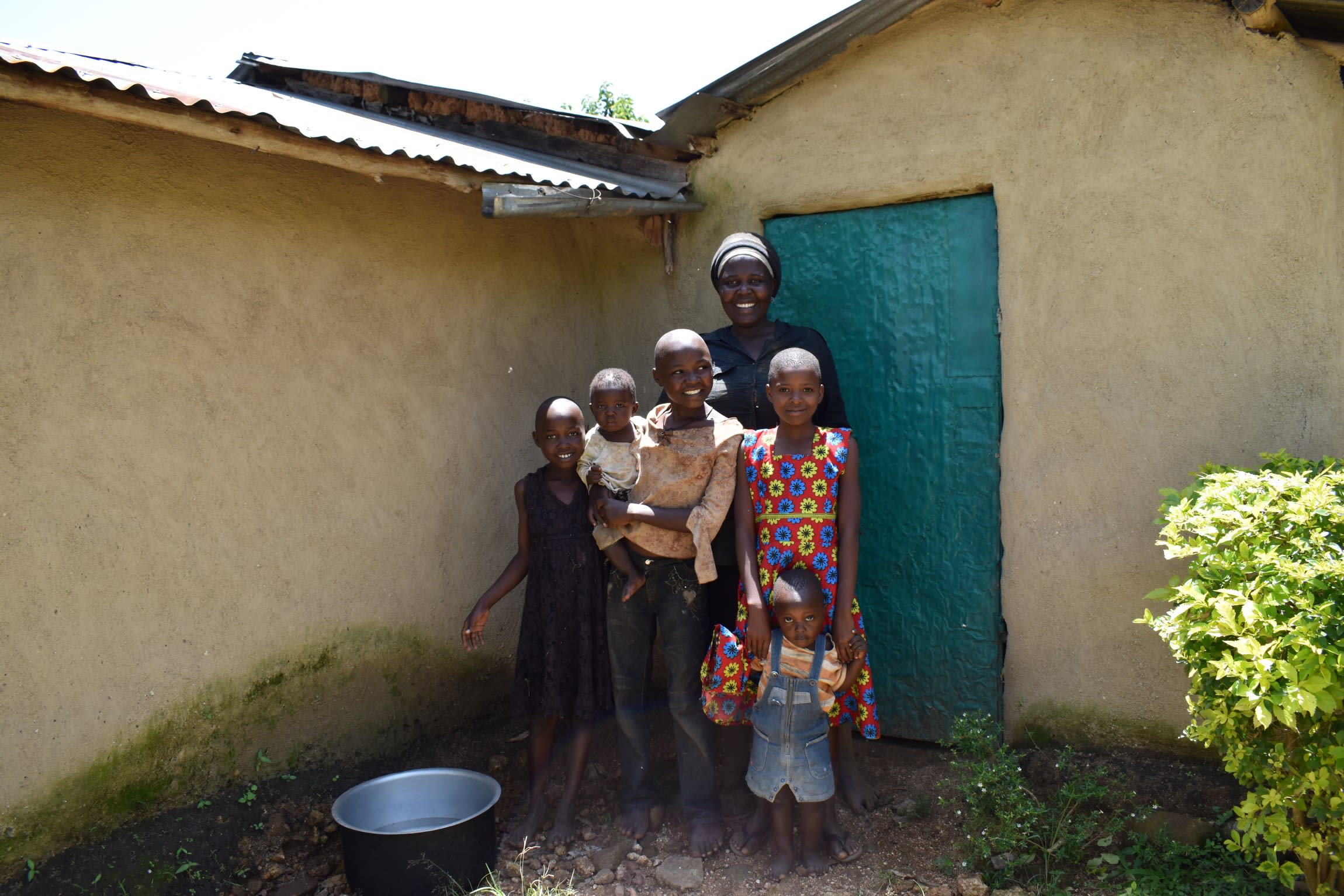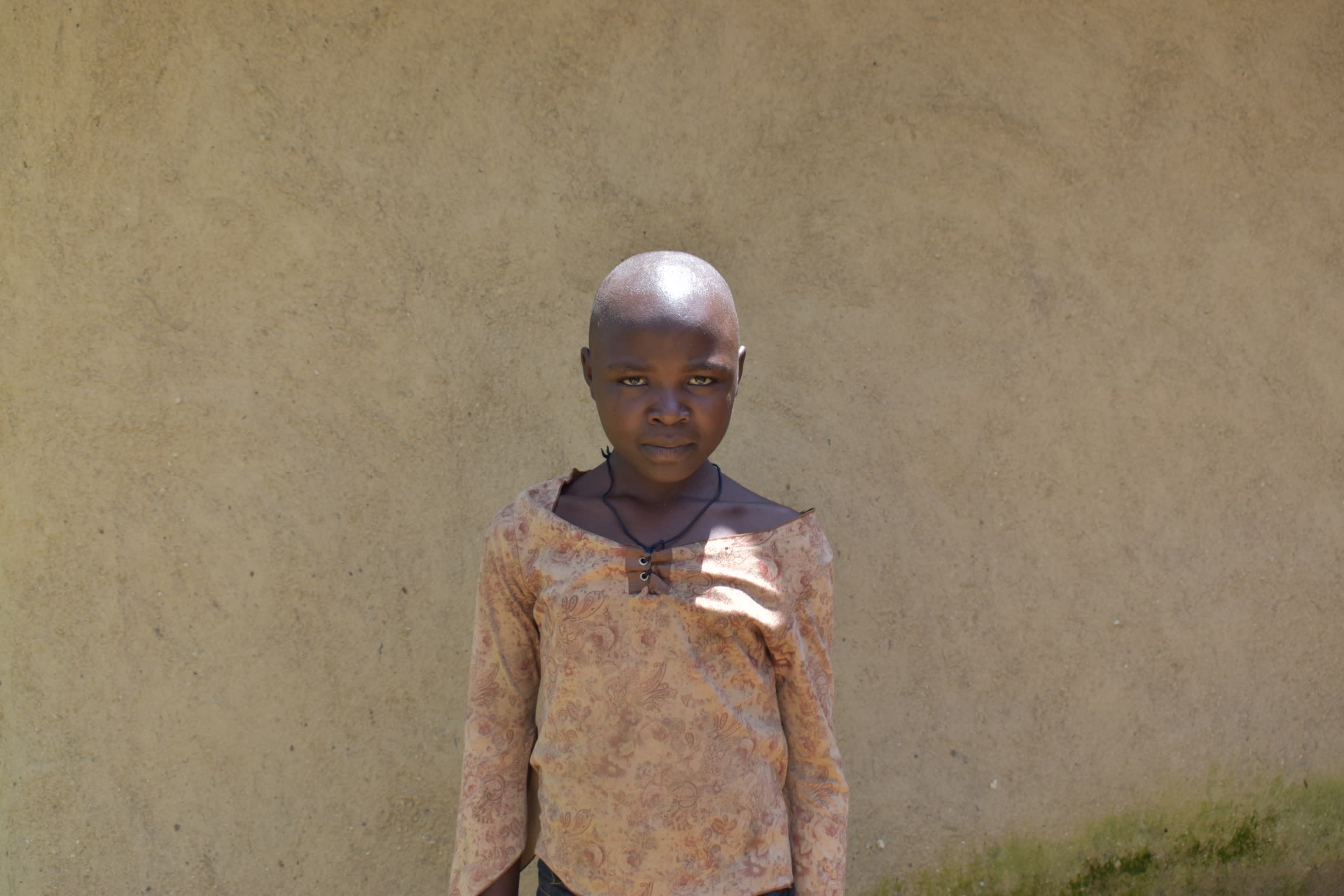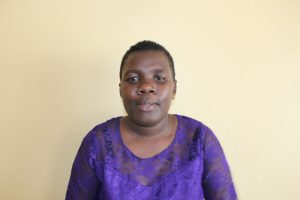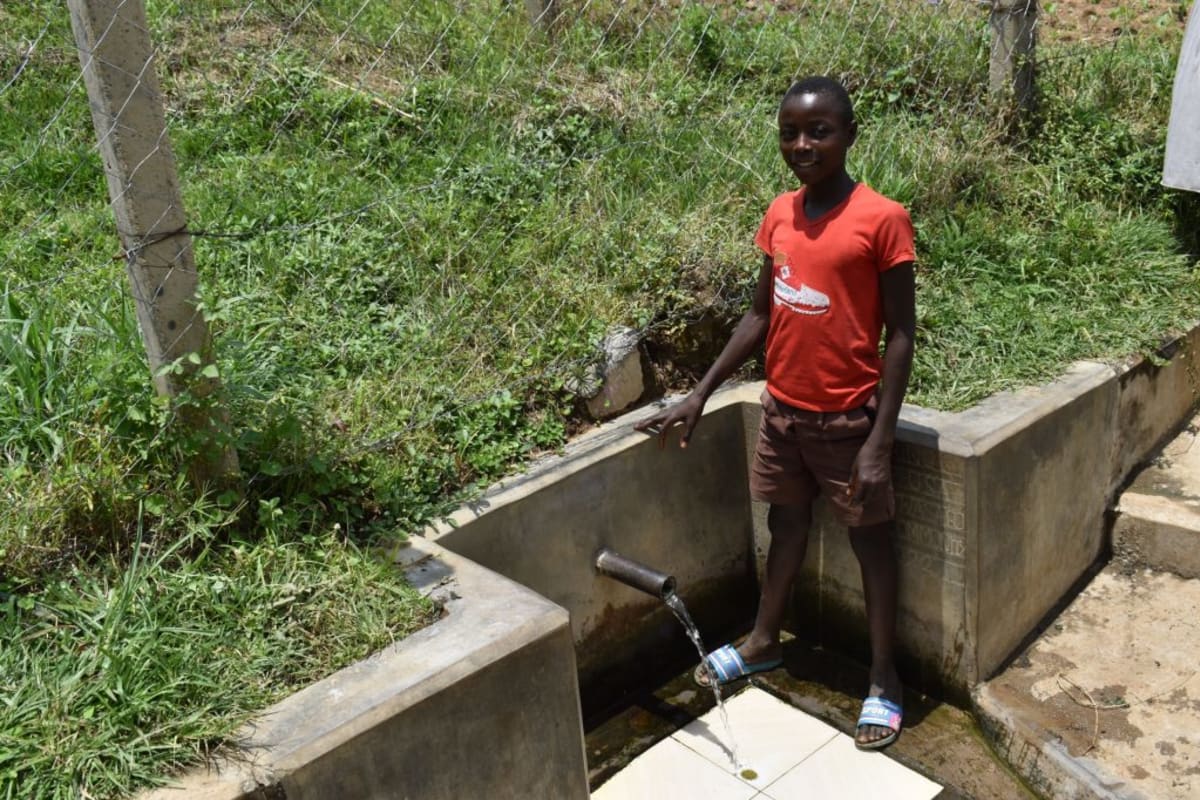The 245 people who live in Elusolokho don't have much. Interviewees told us they were lucky to be able to serve one meal a day to their families "just to keep them moving." They farm to eat and perform manual labor for whoever will hire them, but their earnings are meager.
This troublesome situation is made worse by the community's water crisis. Shirama Spring, which was last protected in 2001, has fallen into disrepair. Water oozes from the spring's walls. Stagnant water pools at the bottom where people stand. Farms surround the spring, contaminating the catchment area with fertilizer and manure.

The problems with the spring mean the water is no longer safe for people to drink. Typhoid, cholera, and chronic diarrhea force community members to spend their hard-earned money on medicine and hospital visits.

"[I] am a housewife and my husband has no permanent job," said Christine, 32 (seen in the above picture with her children). "We depend on manual work. So [one] day, my husband became sick [with] typhoid and we needed to rush to the hospital and we didn't have money. It was painful seeing him in that condition."
Christine explained that even when the water is treated or boiled to curb water-related illness, children still sometimes drink water straight from the source, which means the community's most vulnerable members are also most prone to contracting diseases.

Christine's daughter, Eunice (pictured above), explained the water situation's effect on schooling. "[I] have been hearing people complaining of this water. Some missed school because they were sick or taking care of their relatives just because of water, which is not good."
With a source of clean water, a critical expense will be removed from Elusolokho's worries. Community members will feel better, which will increase their energy and motivation. Water-related illness will no longer hamper their efforts to provide for themselves and their loved ones.
What We Can Do:
Spring Protection
Protecting the spring will help provide access to cleaner and safer water and reduce the time people have to spend to fetch it. Construction will keep surface runoff and other contaminants out of the water. With the community’s high involvement in the process, there should be a good sense of responsibility and ownership for the new clean water source.
Fetching water is a task predominantly carried out by women and young girls. Protecting the spring and offering training and support will, therefore, help empower the female members of the community by freeing up more of their time and energy to engage and invest in income-generating activities and their education.
Training on Health, Hygiene, COVID-19, and More
To hold trainings during the pandemic, we work closely with both community leaders and the local government to approve small groups to attend training. We ask community leaders to invite a select yet representative group of people to attend training who will then act as ambassadors to the rest of the community to share what they learn. We also communicate our expectations of physical distancing and wearing masks for all who choose to attend.
The training will focus on improved hygiene, health, and sanitation habits in this community. We will also have a dedicated session on COVID-19 symptoms, transmission routes, and prevention best practices.
With the community’s input, we will identify key leverage points where they can alter their practices at the personal, household, and community levels to affect change. This training will help to ensure participants have the knowledge they need about healthy practices and their importance to make the most of their water point as soon as water is flowing.
Our team of facilitators will use a variety of methods to train community members. Some of these methods include participatory hygiene and sanitation transformation, asset-based community development, group discussions, handouts, and demonstrations at the spring.
One of the most important issues we plan to cover is the handling, storage, and treatment of water. Having a clean water source will be extremely helpful, but it is useless if water gets contaminated by the time it is consumed. We and the community strongly believe that all of these components will work together to improve living standards here, which will help to unlock the potential for these community members to live better, healthier lives.
We will then conduct a small series of follow-up trainings before transitioning to our regularly scheduled support visits throughout the year.
Training will result in the formation of a water user committee, elected by their peers, that will oversee the operations and maintenance of the spring. The committee will enforce proper behavior around the spring and delegate tasks that will help preserve the site, such as building a fence and digging proper drainage channels. The fence will keep out destructive animals and unwanted waste, and the drainage will keep the area’s mosquito population at a minimum.

 Protected Spring
Protected Spring
 Rehabilitation Project
Rehabilitation Project









































